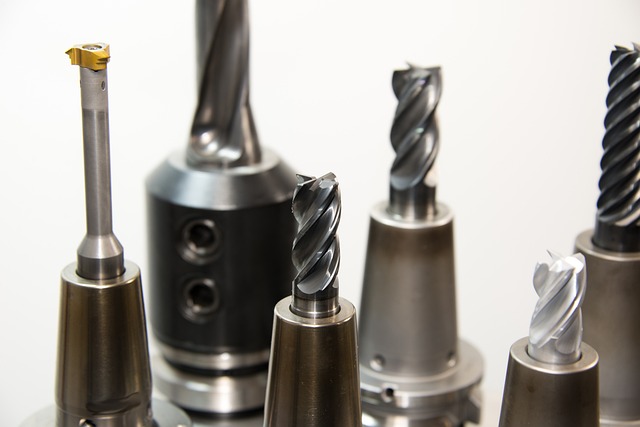Rebar detailing is essential for designing and constructing reinforced concrete structures. It involves creating detailed steel fabrication drawings that specify material grades, dimensions, and tolerances. These drawings guide fabrication, ensure structural integrity, and facilitate collaboration among design and construction teams. Professional engineers use advanced software to map out rebar placement for optimal strength under various loads, ensuring durable and aesthetically appealing structures. Quality assurance checks verify rebar dimensions and specifications against these drawings, guaranteeing structure longevity and integrity.
In the realm of reinforced concrete construction, comprehensive rebar detailing is a game-changer. This article delves into the intricate process of creating robust and structurally sound foundations by exploring key aspects such as understanding rebar detailing requirements, crafting accurate steel fabrication drawings, seamlessly integrating reinforcement into concrete design, and ensuring quality assurance during rebar placement. Discover how these elements interplay to enhance structural integrity and efficiency in today’s building landscape.
Understanding Rebar Detailing Requirements
Understanding the rebar detailing requirements is a pivotal step in the design and construction of reinforced concrete structures. This involves meticulously considering the structural integrity, material properties, and specific load conditions to ensure optimal steel reinforcement. Rebar detailing encompasses more than just selecting the appropriate diameter and spacing; it includes creating detailed steel fabrication drawings that accurately depict the rebar layout, connections, and supports within the concrete matrix. These drawings serve as a blueprint for the on-site welding, installation, and overall assembly of the reinforced elements.
By carefully addressing rebar detailing, engineers and builders can guarantee the structural efficiency and durability of the final structure. This process involves integrating various factors such as the concrete mix design, the expected service loads, environmental considerations, and the unique requirements of different construction phases. Properly detailed rebar drawings not only streamline construction but also contribute to the overall quality and safety of reinforced concrete projects.
Creating Accurate Steel Fabrication Drawings
Creating accurate steel fabrication drawings is a critical step in the design and construction of reinforced concrete structures. These detailed drawings serve as blueprints for the structural steel elements, ensuring proper placement, dimensions, and connections. Professional engineers and draftspersons use specialized software to generate these drawings, incorporating specific material grades, sizes, and tolerances tailored to each project’s unique requirements.
Accurate steel fabrication drawings streamline the fabrication process by providing clear instructions for steelworkers. They facilitate precise cutting, bending, and assembly of steel bars, ensuring structural integrity and compliance with building codes. Furthermore, these drawings promote collaboration among various project stakeholders, from designers and contractors to fabricators and builders, fostering a seamless transition from design to construction.
Integrating Reinforcement into Concrete Design
Integrating reinforcement into concrete design is a meticulous process that demands precise planning and detailed engineering. Reinforced concrete structures rely on this strategic placement of steel to enhance compressive strength, flexural resistance, and overall structural integrity. Professional engineers utilize advanced software and comprehensive rebar detailing standards to create accurate steel fabrication drawings. These drawings meticulously map out the exact dimensions, spacing, and types of reinforcement bars (rebar) needed for each unique concrete element, ensuring optimal performance under various loads.
By seamlessly incorporating reinforcement into their designs, architects and civil engineers can create robust and durable structures capable of withstanding extreme environmental conditions, heavy loads, and seismic activities while maintaining aesthetic appeal and structural efficiency. Effective rebar detailing is the backbone of successful reinforced concrete construction, making it an indispensable aspect for any project that seeks both strength and longevity.
Quality Assurance in Rebar Placement
Ensuring proper quality assurance during rebar placement is paramount for reinforced concrete structures’ integrity and durability. This process involves meticulous verification of rebar dimensions, specifications, and positioning as outlined in detailed steel fabrication drawings. Every rebar must be carefully inspected to confirm it meets the required standards, including material grade, size, and bend requirements.
Qualified personnel should oversee this operation, implementing rigorous checks at every stage to identify and rectify any deviations from the design intent. Proper alignment, spacing, and overlap are crucial aspects that directly impact the structure’s overall strength and performance. Adherence to these protocols guarantees that the final concrete structure benefits from optimal reinforcement, enhancing its longevity and structural integrity.
Comprehensive rebar detailing is vital for ensuring the structural integrity and longevity of reinforced concrete structures. By understanding the specific requirements, creating precise steel fabrication drawings, seamlessly integrating reinforcement into the concrete design, and implementing rigorous quality assurance in rebar placement, construction professionals can achieve robust and safe buildings that stand the test of time.
